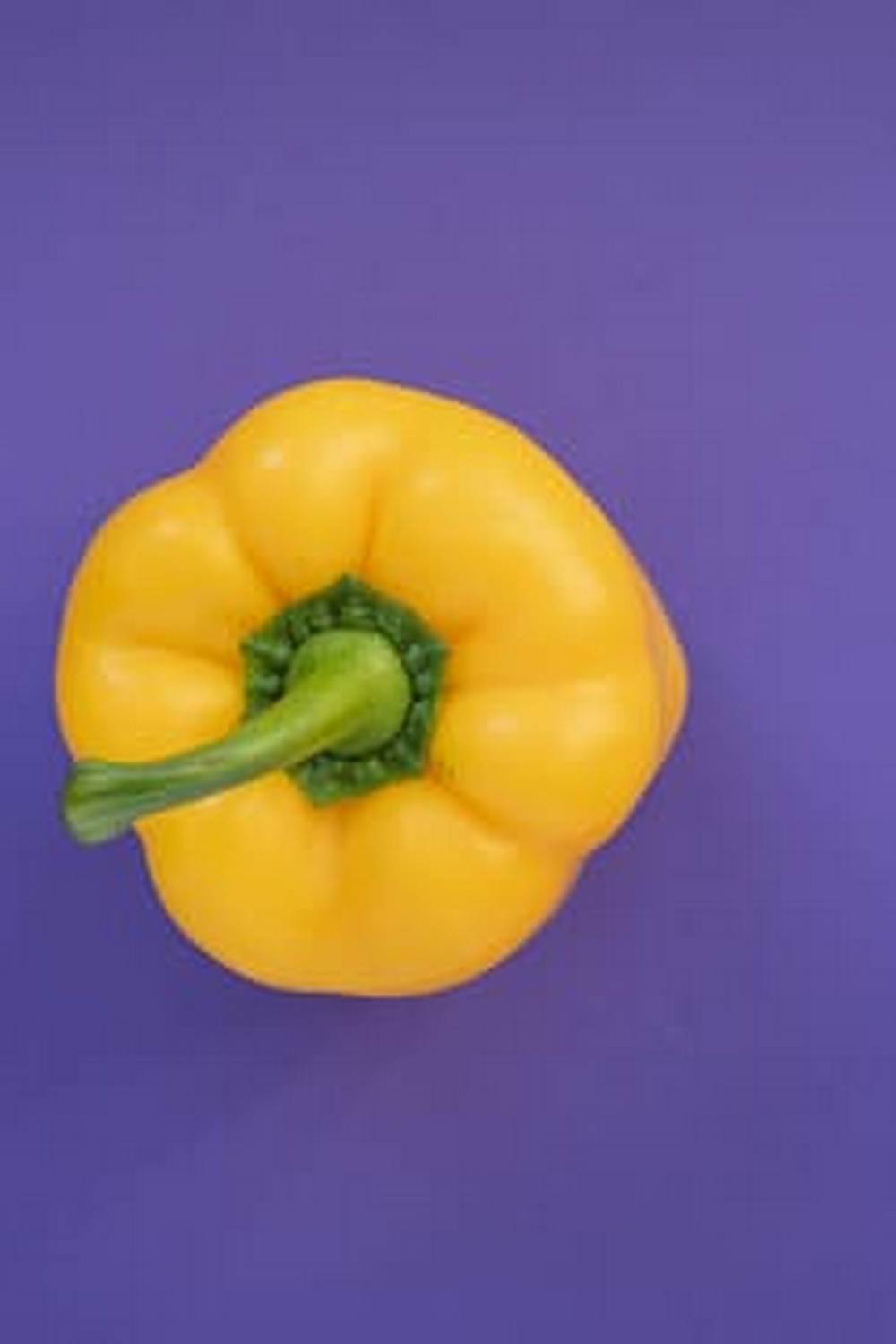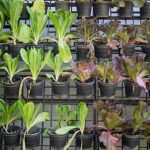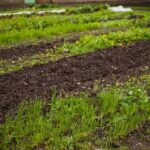Are you interested in creating a beautiful and functional small vegetable garden? From maximizing space to choosing the right vegetables, there are many creative ways to grow your own produce in a limited area. Whether you have a small yard, balcony, or patio, you can still enjoy the benefits of gardening by exploring various techniques such as container gardening, vertical gardening, raised bed gardens, companion planting, and unique garden designs.
In this article, we will provide you with valuable tips and insights on how to plan, create, and maintain a thriving small vegetable garden. We will explore the beauty and functionality of creative small vegetable gardens, offering practical advice on making the most of limited space while achieving impressive results. Whether you are a novice or experienced gardener, there is something for everyone in this comprehensive guide.
From choosing the right layout and plants to harvesting and enjoying the fruits of your labor, we will cover all aspects of creating and caring for a small vegetable garden. Get ready to unleash your creativity and discover the endless possibilities of growing your own fresh produce in a compact space. Let’s dive into the world of creative small vegetable gardens and unlock the potential for an abundant and rewarding gardening experience.
Planning Your Creative Small Vegetable Garden
When planning a creative small vegetable garden, maximizing space is essential to ensure you can grow a variety of nutritious produce. One effective strategy for making the most of limited space is to utilize vertical gardening techniques. By growing crops upwards, such as on a trellis or wall-mounted containers, you can take advantage of unused space and increase your overall yield. Additionally, consider using raised beds to create defined planting areas and optimize soil quality for better plant growth.
When choosing the right vegetables for your small garden, prioritize plants that are well-suited to small spaces and offer high yields. Vegetables like cherry tomatoes, lettuce, peppers, and herbs are perfect for compact gardens and can thrive in containers or small raised beds. For those with limited space, opt for bush varieties of popular vegetables rather than sprawling vine types. This will allow you to grow more plants in less area without sacrificing productivity.
Another important aspect of planning a creative small vegetable garden is considering companion planting. This gardening technique involves pairing compatible plants together to enhance growth and deter pests. For example, planting marigolds alongside tomatoes can help protect them from harmful insects while adding a pop of color to your garden. By incorporating companion planting into your garden plans, you can maximize the use of your space and promote healthy plant growth without relying on chemical pesticides.
Container Gardening
To maximize space and yield, select containers that are large enough to accommodate the root systems of your chosen vegetables. Additionally, ensure that the containers have proper drainage to prevent waterlogged soil and root rot. When it comes to choosing the right vegetables for container gardening, opt for compact varieties such as cherry tomatoes, dwarf peppers, bush beans, and salad greens. Herbs like basil, parsley, and chives also thrive in containers and can be easily accessed for culinary use.
When setting up your creative small vegetable garden in pots and containers, consider placing them in areas that receive adequate sunlight throughout the day. Most vegetables require at least 6-8 hours of direct sunlight to flourish. Additionally, regular watering is crucial for container gardening since pots tend to dry out faster than garden beds. Utilize a high-quality potting mix and fertilize regularly with organic nutrients to promote healthy growth and productive harvests from your small vegetable garden.
With careful planning and proper care, container gardening can provide a bountiful harvest from a limited amount of space. Whether you have a balcony, patio, or small yard, creating a thriving small vegetable garden in pots and containers is an achievable and rewarding endeavor. Explore different options for container sizes, shapes, and materials to design a unique and productive small vegetable garden that suits your available space and personal style.
Vertical Gardening
Introduction to Vertical Gardening
In today’s increasingly urbanized world, space for traditional backyard vegetable gardens is often at a premium. However, with a little creativity and ingenuity, even the smallest outdoor or indoor spaces can become productive growing areas. One way to achieve this is through vertical gardening, which involves using vertical space to grow vegetables upwards rather than outwards. This section will explore the benefits of vertical gardening and provide practical tips for implementing this innovative approach.
Maximizing Space and Choosing the Right Vegetables
When it comes to vertical gardening, maximizing space is key. By going vertical, gardeners can make use of walls, fences, trellises, and even hanging structures to create a flourishing vegetable garden in a compact area.
When planning a vertical garden, it’s important to choose vegetables that are well-suited for this style of growing. Vining plants like tomatoes, cucumbers, peas, and beans are ideal for vertical gardens as they naturally want to climb and can thrive when given the opportunity to do so.
Tips for Implementing Vertical Gardens
There are several strategies for implementing successful vertical gardens. One popular method is using trellises or wire mesh attached to a wall or fence for climbing plants like peas and pole beans. Another option is utilizing hanging planters or constructing DIY shelving systems for potted herbs or smaller vegetable varieties.
Additionally, incorporating hydroponic or aeroponic systems into vertical gardening can allow for year-round vegetable production in limited spaces. By thinking outside the box and getting creative with design and structure, even those with minimal outdoor space can enjoy a productive small vegetable garden through vertical gardening methods.
Raised Bed Gardens
When it comes to small vegetable gardens, raised bed gardening can be an excellent option for maximizing space and productivity. Raised bed gardens are essentially garden beds that are elevated above the ground, usually in a contained area made of wood, stone, or other materials. These types of gardens offer various benefits such as improved soil quality, better drainage, and easier maintenance.
One of the key advantages of raised bed gardens is the ability to control the soil quality and composition. This means you can create the ideal growing environment for your vegetables, regardless of the existing soil conditions in your yard. Additionally, raised beds can provide better drainage, which is particularly beneficial for small spaces where water runoff and poor drainage can be common issues.
Another advantage of raised bed gardening is the enhanced ease of maintenance. These gardens typically require less weeding and are easier to access for planting, watering, and harvesting. This can be especially advantageous in small spaces where maneuvering around traditional garden plots may be challenging.
Additionally, raised bed gardens can be aesthetically pleasing and offer opportunities for creative designs. With a little ingenuity and planning, a raised bed garden can become a beautiful focal point in any outdoor space. Whether it’s using different materials for construction or incorporating companion plants for visual appeal and functionality, there are plenty of opportunities to get creative with your small vegetable garden design.
| Raised Bed Gardening Benefits | Advantages |
|---|---|
| Improved Soil Quality | Enhanced ease of maintenance |
| Better Drainage | Aesthetically pleasing designs |
Companion Planting
When planning your creative small vegetable garden, one important concept to consider is companion planting. This gardening technique involves planting different crops in close proximity to help them thrive by providing each other with benefits such as pest control, pollination, and nutrient uptake. By strategically choosing which vegetables to plant together, you can optimize growth and minimize pests in your small garden.
Here are some popular companion planting combinations to consider for your creative small vegetable garden:
- Plant tomatoes with basil and carrots to improve flavor and repel pests
- Pair cucumbers with radishes and peas to deter cucumber beetles and provide ground cover
- Grow corn with beans and squash in a “Three Sisters” arrangement for mutual support
- Combine lettuce with onions and beets to maximize space and discourage pests
In addition to traditional in-ground companion planting, this technique can also be applied in container gardens or raised beds. With careful planning and research, you can create a harmonious ecosystem within your small vegetable garden that promotes healthy growth and reduces the need for chemical pesticides. Experimenting with different companion planting combinations can add an extra level of creativity and functionality to your small vegetable garden.
Creative Garden Designs
Small vegetable gardens don’t have to be limited to practicality. In fact, they can be a stunning addition to your outdoor space, adding both functionality and aesthetic appeal. By utilizing unique and innovative designs, you can create a small vegetable garden that is not only productive but also visually captivating.
One creative approach to designing small vegetable gardens is by incorporating raised beds in various shapes and sizes. This not only adds visual interest but also helps with organization and efficient use of space. Another design idea is to mix different types of vegetables in a single bed, creating a beautiful tapestry of colors and textures.
In addition to traditional garden beds, consider integrating vertical elements such as trellises or hanging planters to maximize space and add dimension to your small vegetable garden. This allows for the growth of vining plants like tomatoes, cucumbers, and peas while optimizing space.
Lastly, consider mixing in ornamental plants among your vegetables for added visual appeal. Flowers like marigolds or nasturtiums not only add beauty to the garden but also act as natural pest deterrents. With some creativity and strategic planning, you can transform your small vegetable garden into a visually stunning and highly productive outdoor oasis.
Maintenance and Care
Once you have established your creative small vegetable garden, it is essential to ensure that it remains healthy and productive. By following some key maintenance and care tips, you can continue to enjoy a bountiful harvest from your small space garden. Here are some essential tips and techniques for keeping your creative small vegetable garden thriving:
- Regular Watering: One of the most important aspects of maintaining a healthy small vegetable garden is regular watering. Ensure that your plants receive an adequate amount of water, especially during hot and dry periods.
- Weeding: Keep your small vegetable garden free from weeds that can compete with your plants for nutrients and water. Regular weeding is crucial for the health and productivity of your garden.
- Fertilizing: Provide the necessary nutrients to your plants by fertilizing them regularly. Choose a fertilizer that is suitable for the types of vegetables you are growing in your small garden.
In addition to these basic maintenance tasks, it’s important to monitor for signs of pests or diseases in your small vegetable garden. Keeping an eye out for any issues and addressing them promptly can help maintain the health and productivity of your plants.
Another key aspect of caring for a creative small vegetable garden is staying on top of pruning and harvesting. Regularly prune back overgrown foliage to encourage healthy growth, and be sure to harvest ripe produce in a timely manner to encourage continued production.
By implementing these essential maintenance and care tips, you can ensure that your creative small vegetable garden remains healthy, productive, and enjoyable throughout the growing season. Remember that even in a limited space, with proper care and attention, you can achieve impressive yields from your small vegetable garden.
Harvesting and Enjoying the Fruits of Your Labor
In conclusion, creative small vegetable gardens offer a beautiful and practical way to grow your own produce, even in limited spaces. By maximizing space, choosing the right vegetables, and utilizing innovative gardening techniques such as container gardening, vertical gardening, raised bed gardens, and companion planting, you can create a thriving small vegetable garden. With the right maintenance and care, these gardens can provide an abundance of fresh, healthy produce for you to enjoy.
Harvesting the fruits of your labor is one of the most rewarding parts of having a small vegetable garden. Whether you have grown a variety of tomatoes, peppers, lettuce, or herbs, there is something truly satisfying about picking your own homegrown produce. The flavors are often more intense and satisfying than store-bought alternatives. Additionally, sharing your bountiful harvest with family and friends can be a source of pride and joy.
Overall, creative small vegetable gardens offer a wealth of benefits – from providing fresh and organic produce to enhancing the aesthetic appeal of your outdoor space. By incorporating unique and innovative designs into your small vegetable garden, you can create a beautiful and functional area that not only looks great but also provides an abundance of delicious vegetables for you to enjoy throughout the growing season.
Whether you are new to gardening or have years of experience in nurturing plant life, exploring creative small vegetable gardens is sure to inspire you to elevate your outdoor space through the beauty and productivity that gardening has to offer.
Frequently Asked Questions
How Do You Layout a Small Vegetable Garden?
When laying out a small vegetable garden, it’s important to consider the sunlight, spacing, and water access for each plant. Be strategic in arranging the plants to maximize space and yield.
How Do You Make the Most of a Small Vegetable Garden?
To make the most of a small vegetable garden, consider incorporating vertical gardening techniques such as trellises or hanging planters. Additionally, interplanting compatible vegetables and using succession planting can optimize space and productivity.
What Vegetables Are Best for Small Gardens?
The best vegetables for small gardens are those that are compact in growth and produce a high yield. This includes lettuce, spinach, radishes, carrots, tomatoes (determinate varieties), peppers, green onions, and herbs like basil and cilantro. These crops are well-suited for smaller spaces while still providing a bountiful harvest.

If you’re looking to get into vegetable gardening, or are just looking for some tips on how to make your current garden better, then you’ve come to the right place! My name is Ethel and I have been gardening for years. In this blog, I’m going to share with you some of my best tips on how to create a successful vegetable garden.





